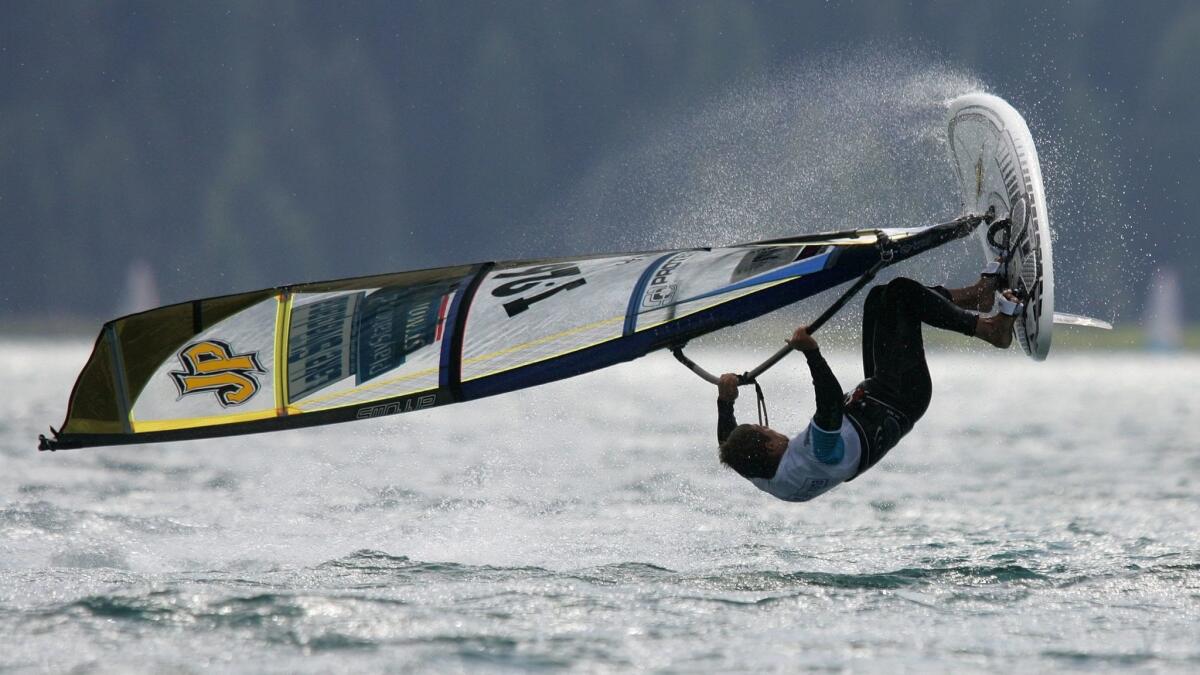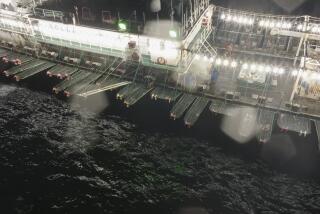S. Newman Darby, the overlooked creator of the ‘sailboard’, dies at 88
On a mountain lake deep in eastern Pennsylvania, S. Newman Darby fiddled with the sail and kept his balance on the wide board beneath his feet.
He called the contraption a “sailboard” and guessed he’d been inspired after watching his future wife, Naomi, navigate a small, rudderless boat while standing up, leaning into the sail to shift direction.
By the time he refined the board — a metal universal joint for the hand-guided sails, an actual surfboard for the base, sails sewn by Naomi — there wasn’t enough money left over to patent the device. He figured it was unnecessary anyway, since he’d written a detailed story of the creation for Popular Science magazine in 1965, right down to a detailed schematic of the board and a list of materials Naomi had used for the sails.
Yet by the time the board made its way into the hands of consumers, exploding first in Europe and then becoming another option in the Southern California surf arsenal, Darby all but disappeared under the wake of its immense popularity.
Credit for the creation of what is now known as the Windsurfer was bestowed upon a pair of Southern California surfers, Jim Drake and Hoyle Schweitzer.
Darby, who died Dec. 3 at 88 at his home in St. Johns, Fla., chafed quietly that his involvement in the evolution of the board had become just a footnote.
“I guess you can be the father of the sport, but still get nothing for it,” Naomi Darby said in a 1998 interview with the Florida Times-Union.
Wendy Darby Brown said her father never resented those who had ridden the board’s popularity to prosperity, but he wished he’d been given more credit along the way.
“He was an inventor, not a businessman,” she said.
Born in Wilkes-Barre, Pa., on Jan. 31, 1928, Darby was a tinkerer from the start. He tried to build his own boat when he was 12, but it sank. He tried again when he was 14, with far more success.
The idea of the sailboard was born from the desire to be free of the usual constraints of sailing — tugging on lines, ducking as the boom came about, steering with a rudder rather than leaning into the wind and guiding the sails yourself.
In one photograph of a primitive version of the sailboard, Darby is seen holding on to a kite-like device while his feet are planted on what looks for all the world like a door.
With the help of his wife and a brother, he set up Darby Industries Inc. and manufactured an improved model of the board with an extra-wide hull.
But sales came slowly, and after manufacturing about 160 of the boards — some given away as gifts on the television show “The Price is Right” — they closed shop.
The Windsurfer, on the other hand, took off under the watch of Drake and Hoyle. Drake, who was cautious to call himself a “re-inventor” of the board, sold out to his partner in the 1970s for $32,000, devoting himself to his career as an aeronautical engineer. Schweitzer, meanwhile, became a leading manufacturer of the board.
Watching from the other side of the country, Darby could only marvel when windsurfing became so popular that it was added as an event for men in the 1984 Olympic Games in Los Angeles. Eight years later, it became an event for women, too.

“He had faith that it would become a popular sport, and when it was added to the Olympics, his attitude was, ‘Well, it should be,’ ” said Brown, Darby’s daughter.
Though few seemed to go out of their way to give Darby credit, a modest dose of fame came his way just the same.
After a reader pointed out to the editors of American Windsurfer magazine that Darby had been overlooked in a 1996 article on the origins of the sport, the magazine’s editor responded by going to Florida and pulling together a lengthy piece on Newman and Naomi Darby.
“We came face to face with an elderly couple who fell in love with each other and during their courtship, conceived a sport,” John Chao wrote.
At the editor’s urging, the Smithsonian Institution’s archive division investigated Darby’s claim that he had designed a sailboard several years before it evolved into the hugely popular Windsurfer.
The investigation led the National Museum of American History to collect and display Darby’s early drawings, photographs, 8mm films of his first efforts on a rugged board and several of his sailboards.
Alison Oswald, the archivist who led the effort, told the Times-Union that she was immediately impressed that Darby and his wife had far more pride in their creation than anger at being overlooked for so long.
“Money wasn’t their motivation,” Oswald said. “They saw something that was fun, and they wanted to make it available to everyone.”
Darby, who was an artist and operated his own sign-painting business, never lost his fondness for sailing and outdoor activities, his daughter said.
“He was the parent you always wanted as a babysitter — few rules and lots of adventure.”
Darby is survived by his wife, daughters Brown and Cindy Darby Tucker, a grandson and a brother.
Wilkes-Barre, PA on January 31, 1928
Wilkes-Barre, PA on January 31, 1928
Wilkes-Barre, PA on January 31, 1928
steve.marble@latimes.com
Twitter: @stephenmarble
More to Read
Start your day right
Sign up for Essential California for the L.A. Times biggest news, features and recommendations in your inbox six days a week.
You may occasionally receive promotional content from the Los Angeles Times.







